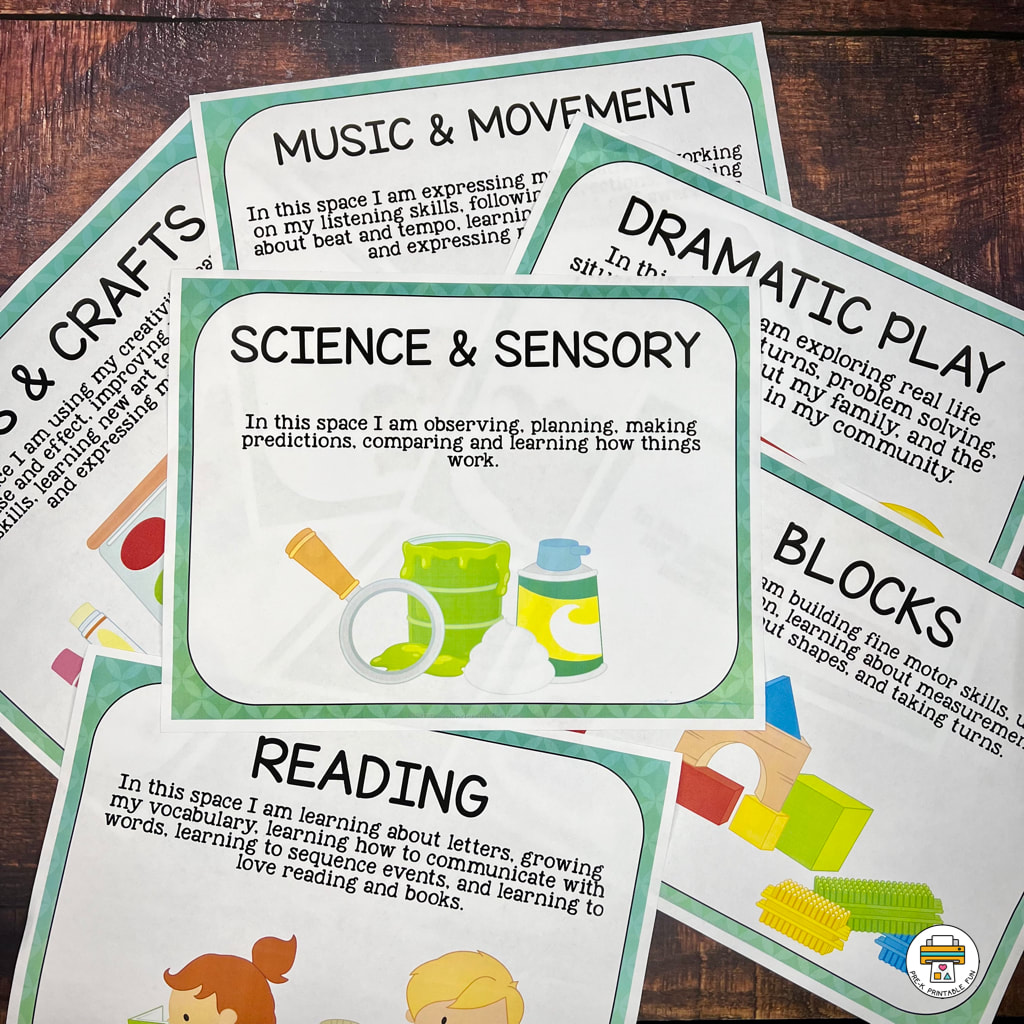Introduction to Preschool Science
Preschool science is an essential aspect of early childhood education. It helps in developing children's natural curiosity about the world around them, enhances their problem-solving skills, and encourages them to explore and discover new things. In this article, we will explore the importance of preschool science and how it can be effectively integrated into early childhood education.
|
Table of Contents
Coming Soon!
|
Benefits of Preschool Science
Preschool science and STEM education provide several benefits to young children. It helps them develop critical thinking, problem-solving, and analytical skills from an early age. Additionally, it fosters curiosity and creativity, which are essential traits for lifelong learning. STEM education also prepares children for future job opportunities in these fields, as they gain exposure to concepts and skills that are in high demand. Overall, preschool science and STEM education lay a strong foundation for children's academic and career success.
Preschool Science Learning Objectives
Preschoolers learn best through play, so science learning objectives should focus on developing their sense of exploration and discovery.
Some important science learning objectives for preschoolers:
Some important science learning objectives for preschoolers:
- Identify and name basic shapes and colors.
- Recognize and describe similarities and differences between objects.
- Identify and classify objects according to their characteristics.
- Identify and name simple tools used for everyday tasks.
- Begin to understand basic concepts of light, sound, and motion.
- Understand the concept of cause and effect.
- Develop an awareness of animals and their habitats.
- Show an interest in observing the natural world around them.
- Develop an understanding of basic science processes such as mixing, sorting, and observing.
- Develop an understanding of basic scientific vocabulary.
Preschool Science Activities
Preschool science and STEM activities are designed to help children develop the skills they will need in the future.Preschoolers can learn about the natural world through activities like exploring the outdoors, observing plants and animals, and engaging in sensory play. By engaging in these activities, children can learn to think scientifically and become more confident in their abilities.
Physical Science Activities:
Preschoolers can explore physical science concepts such as forces and motion, magnetism, and electricity.
Some popular Physical Science activities for preschoolers include:
Life Science Activities:
Preschoolers can develop an understanding of life science by learning about the basic needs of living things, the life cycles of plants and animals, and how organisms interact in their environment. Some popular preschool life science activities include:
Earth & Space Science Activities:
Preschoolers can learn about earth and space science by learning about the earth’s features, the seasons, weather, and the solar system. Some popular preschool earth and space activities include:
STEM
Preschool STEM (Science, Technology, Engineering, and Math) activities are becoming increasingly popular as parents and educators recognize the importance of introducing young children to these subjects. STEM activities provide children with hands-on experiences that promote problem-solving, critical thinking, and creativity. Here are five fun and engaging preschool STEM activities to try at home or in the classroom:
Physical Science Activities:
Preschoolers can explore physical science concepts such as forces and motion, magnetism, and electricity.
Some popular Physical Science activities for preschoolers include:
- Make a Rainbow: Use colored filters and a flashlight to show how light is composed of different colors.
- Magic Milk: Use a few drops of dish soap and food coloring to explore surface tension.
- Oobleck: Mix cornstarch and water to create an interesting slime-like substance that can be solid and liquid.
- Walking Water: Place colored water in two glasses and connect them with a paper towel to see how liquid moves through porous materials.
- Make a Cloud: Bring a cup of warm water and a few ice cubes outside to observe how clouds form.
- Balloon Rockets: Attach a string to a balloon and blow through it to create a rocket.
- Make a Tornado: Place a few drops of food coloring in an empty two-liter bottle and spin it to observe how a tornado works.
- Water Filters: Use different materials, such as sand, gravel, and charcoal, to create a water filter.
- Build a Lemon Battery: Connect a lemon and a few pieces of metal to a voltmeter and measure the current.
- Build a Volcano: Combine vinegar and baking soda to create a volcano eruption.
Life Science Activities:
Preschoolers can develop an understanding of life science by learning about the basic needs of living things, the life cycles of plants and animals, and how organisms interact in their environment. Some popular preschool life science activities include:
- Plant a garden—This is a great way to introduce children to the life cycle of a plant and the importance of taking care of the environment.
- Create a terrarium—This activity allows children to observe and care for a miniature ecosystem.
- Explore bird watching—This activity teaches children about different species of birds and the importance of conservation.
- Observe insects—Children can learn about the life cycle of different insects and their importance in the environment.
- Visit a farm—This allows children to observe different farm animals and learn about their needs and the role they play in the environment.
- Make a food chain—This activity helps children understand the relationships between different species and how energy flows through an ecosystem.
- Raise butterflies—This activity teaches children about the life cycle of a butterfly and the importance of pollinators.
- Visit a zoo or an aquarium—This allows children to observe different species in the wild and learn about their natural habitats.
- Investigate using your senses—This activity helps children understand their senses and how they help them interact with the world.
Earth & Space Science Activities:
Preschoolers can learn about earth and space science by learning about the earth’s features, the seasons, weather, and the solar system. Some popular preschool earth and space activities include:
- Making a model of the solar system
- Create a constellation with stars made out of glow and the dark stars.
- Create a sedimentary Jar
- Make a cloud in a jar - fill a jar with warm air, water vapor, and a bit of smoke to create a cloud.
Make a water cycle in a bag - set up a water cycle experiment in a plastic bag with water, food coloring, and ice. - Sort rocks
- Observing the night sky
- Observing Different Types of Weather (Set up a Rain Gauge, Record the Weather, Set out a Wind Sock).
- Observing different types of Clouds
- Experimenting with a magnifying glass and sunlight to explore how light travels.
- Track the moon—This activity helps children recognize the patterns of the moon’s phases and understand the relationship between the sun and moon.
- Sorting recycling and discussing ways to reduce, re-reuse and recycle different materials.
STEM
Preschool STEM (Science, Technology, Engineering, and Math) activities are becoming increasingly popular as parents and educators recognize the importance of introducing young children to these subjects. STEM activities provide children with hands-on experiences that promote problem-solving, critical thinking, and creativity. Here are five fun and engaging preschool STEM activities to try at home or in the classroom:
- Build a bridge: Give children a variety of materials such as craft sticks, straws, and tape, and challenge them to build a bridge that can hold a certain weight. Encourage them to experiment with different designs and materials to find the strongest structure.
- Sink or float: Fill a tub with water and provide children with a variety of objects such as rocks, paper clips, and toy cars. Ask them to predict whether each object will sink or float, and then test their predictions. This activity teaches children about buoyancy and density.
- Make a volcano: Mix baking soda and vinegar to create a chemical reaction that simulates a volcanic eruption. This activity teaches children about chemical reactions and the properties of substances.
- Build a tower: Give children a variety of materials such as blocks, cups, and cardboard tubes, and challenge them to build the tallest tower possible. Encourage them to work together and problem-solve as they build.
- Make a simple machine: Provide children with materials such as pulleys, ramps, and wheels, and challenge them to create a simple machine that can move an object from one place to another. This activity teaches children about mechanics and engineering.
Preschool Science Learning Centers
It's important to make space for exploring, and learning about science in your program. You can find tips for creating a Science Learning Center in your classroom here. If you are short on space, consider setting up a sensory table, or even a light table that will allow you to easily rotate materials every few weeks.


